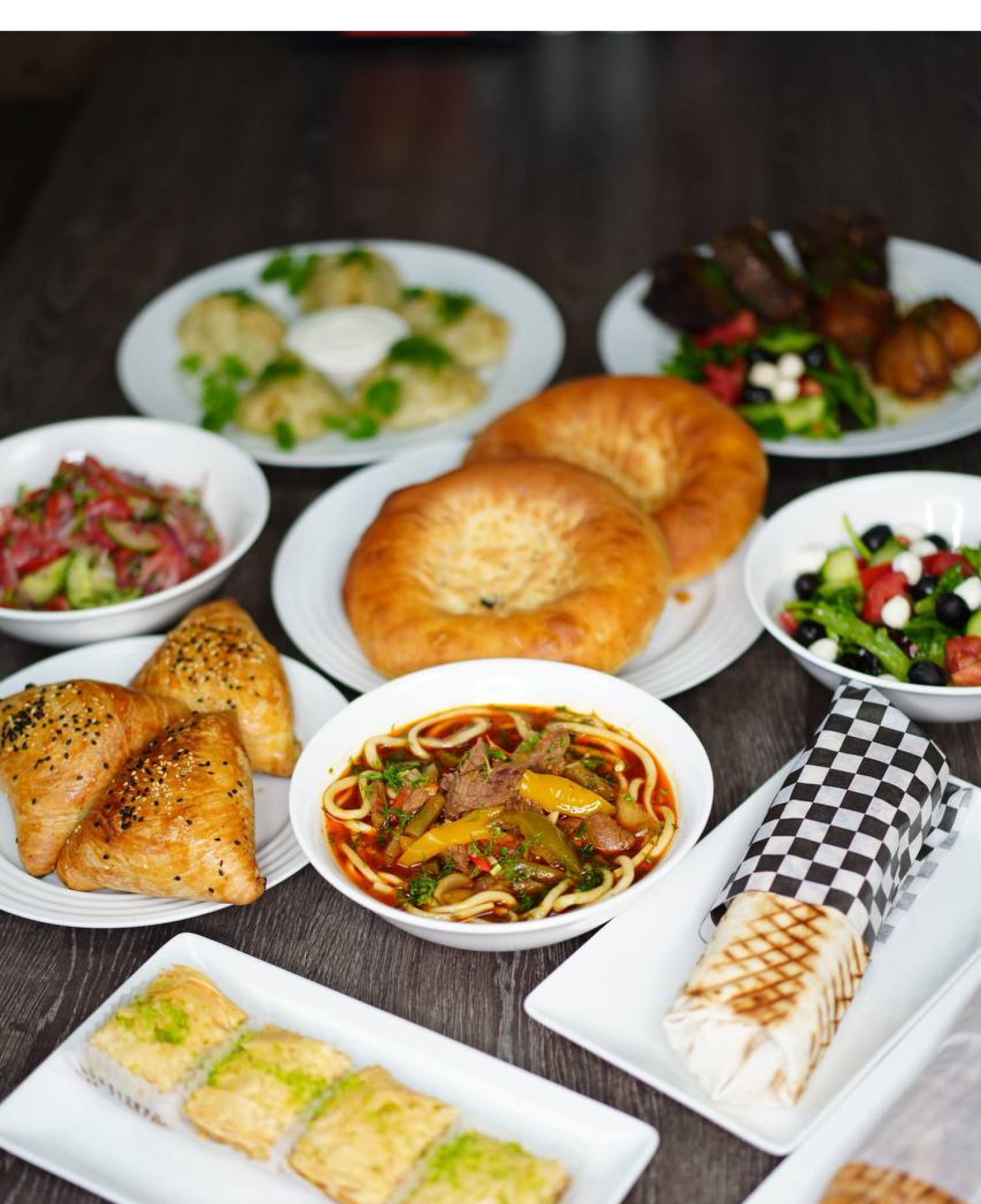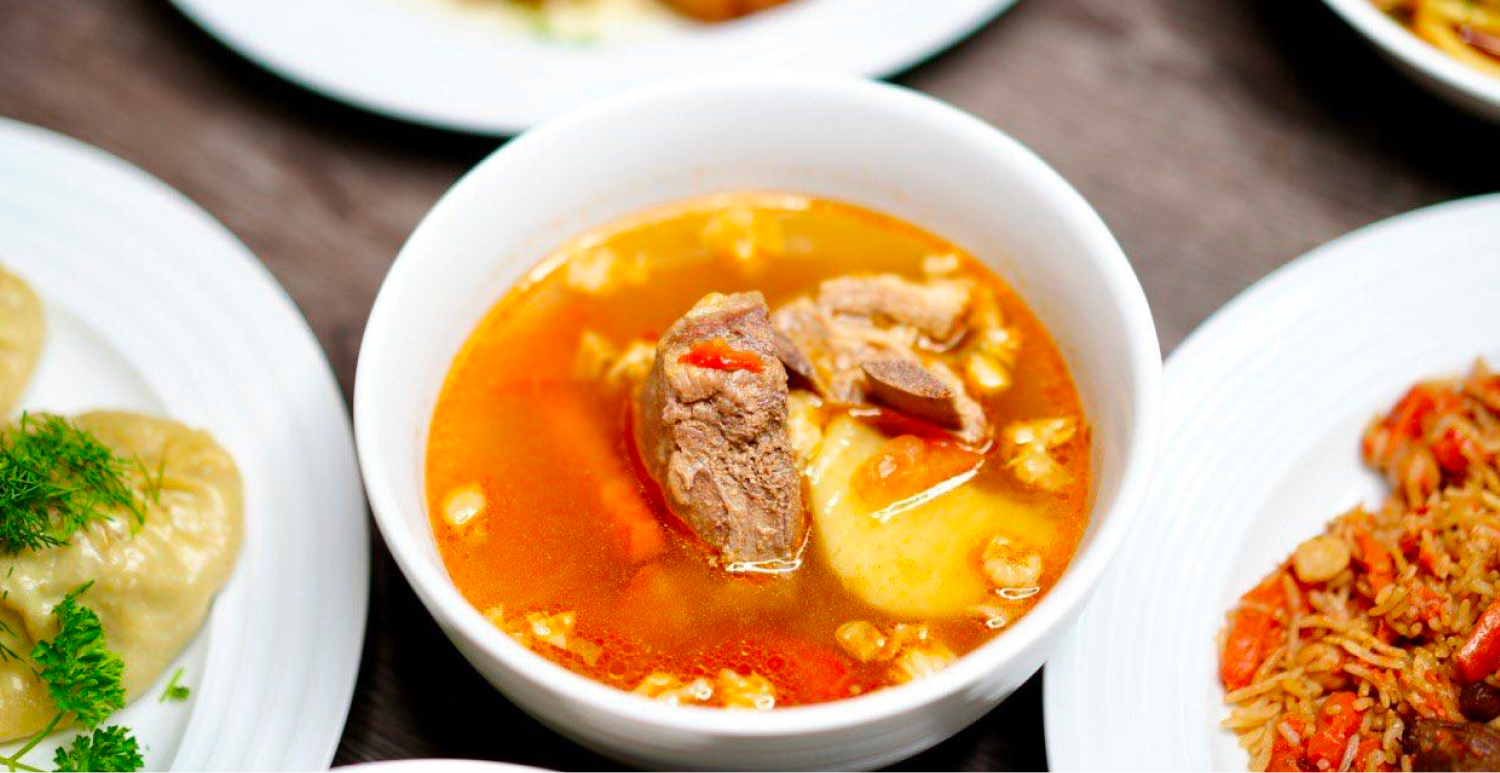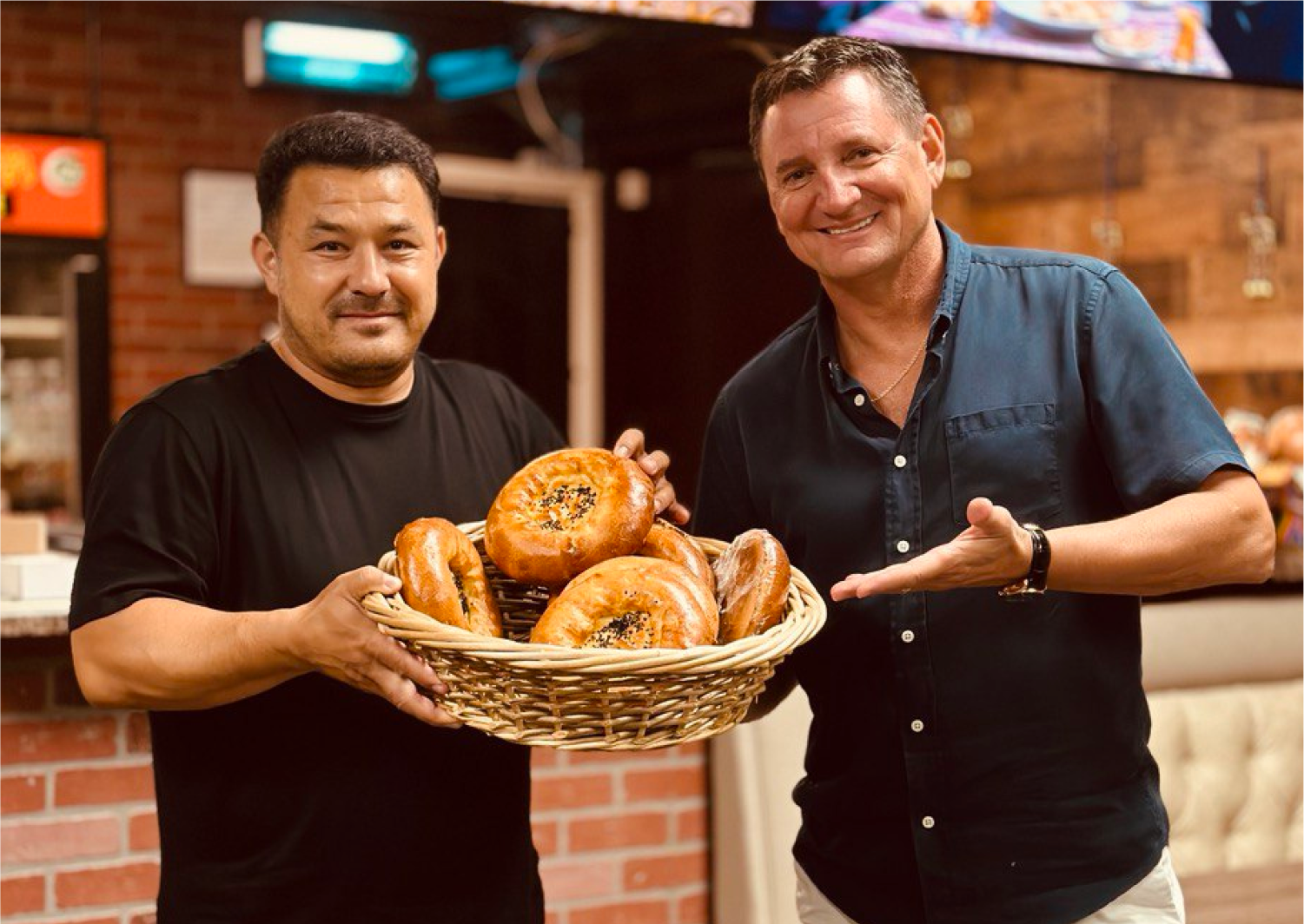
5 minute read
Unveiling the Flavors of Uzbekistan
from New Times Magazine
by R A M
Unveiling the Flavors of Uzbekistan
Introducing “Caravan”
A New Uzbek Halal Restaurant in Citrus Heights, California
by Alisa Yurchenko
We are delighted to have the opportunity to speak with Farhod and Aziza Soatov, the owners of the newly opened Uzbek Halal restaurant 'Caravan'. In this interview, we will delve into the unique aspects of their restaurant and gain insights into Uzbek culture and cuisine, which they are excited to share with the local community.
Farhod, what inspired you to open a restaurant specializing in Uzbek cuisine in California?
Farhod: Certainly. Our national Uzbek cuisine is rich in flavors and has a long history of diverse dishes. When we arrived in Sacramento from Uzbekistan, we couldn't find an Uzbek restaurant that served authentic Uzbek dishes, and we wanted to share our traditional cuisine with this region.
Aziza, could you share a little bit about a traditional Uzbek dish that has become a hit at your restaurant?
Aziza: It's hard to pick just one dish. I've noticed that since the restaurant opened, our guests often order family style—several dishes for the center of the table. One of the most popular dishes is always plov, a traditional dish made with rice, spices, meat, and carrots, served with salads. It's a filling and flavorful dish that truly captures the essence of Uzbek cuisine.

Plov, a mouthwatering meat and rice dish, has a storied past that spans centuries and continents. Tracing its origins back more than 2,000 years, this versatile dish has been a staple in various cultures, each adding its unique twist to the recipe.
Some historians believe that Alexander the Great (356 - 323 BC) can be credited with inspiring the creation of plov. As the legend goes, he tasked his cooks with inventing a filling meal that his troops could eat just once a day. During his visit to the province of Bactria (Eastern Iran), he was served pilaf at a royal banquet. Fascinated by the flavors and texture of this dish, his soldiers brought the recipe back to Macedonia, where it spread throughout Greece.
Evidence of this meat and rice dish was formally recorded by the Persian/Uzbek scholar Avicenna, who called it "palov osh." The name is an acronym compiled from the basic list of ingredients used: piyoz (onion), ayoz (carrot), lakhm (meat), olio (fat), vet (salt), ob (water), and shali.
The saying goes, "If you are poor, you eat plov. And if you are rich, you eat nothing but plov." Its rich history and enduring popularity are a testament to the unique flavors and versatility of this culinary gem.
The largest pilaf was cooked by Uzbek chefs with eight tons of rice. This record was set by the Tashkent oshpazs — the cooks who exclusively prepare this dish. 46 people created the aromatic dish outdoors for almost six hours. For cooking, they used one and a half tons of beef, lamb, three tons of carrots, and a couple of tons of rice. You won’t find such a recipe in any culinary book. The kazan cast iron for this mega-dish was specially cast at a local plant. The King plov made it into the Guinness Book of World Records. Usually, in Uzbekistan, more than 60 types of plov are cooked. And the most interesting thing is that the ingredients are almost the same, but the taste is always different.
Farhod, what other dishes do your guests like to order?
Farhod: Our visitors order a variety of kebabs made from lamb, beef, and chicken. Before the main dishes, we often serve soups such as shurpa and lagman. People also enjoy ordering samsa and manty, kazan-kabob, shawarma, and many other dishes. We are currently expanding our menu by adding more favorite Uzbek dishes.
Shurpa • Shawarma • Lagman • Shish Kabob • Plov • Manty • Samosa

Aziza, what is the significance of bread in Uzbek culture, and what kind of bread do you serve in your restaurant?
Aziza: Bread holds great importance in Uzbek culture. We have different types of bread, but the most popular one is the round “lepyoshka” or the so-called “non-bread,” which has a unique taste and texture.
Farhod, are there any specific etiquettes or customs in Uzbek cuisine?
Farhod: Yes, in Uzbek culture, it is common to share a communal table. People usually eat with their hands and share dishes with others.
Aziza, could you share a traditional Uzbek dessert that you offer to customers?
Aziza: One of the most popular desserts is “baklava,” a sweet treat made from flour, butter, sugar, and nuts. It has a unique texture and a rich nutty flavor.
Aziza, which types of beverages complement Uzbek cuisine well?
Aziza: For fans of traditional cuisine, we serve green and black tea with lemon. For those who prefer cold drinks, there is always compote or water available.
Farhod, are there any specific regions in Uzbekistan that have influenced your cuisine?
Farhod: Uzbek cuisine has been influenced by various regions of Uzbekistan, including Samarkand, Tashkent, and Bukhara. Each region contributes its unique flavors, spices, and cooking techniques that we strive to incorporate into our menu.
Aziza, what do you hope people in California will take away from their experience dining at “Caravan Uzbek Cuisine” restaurant?
Aziza: We hope that people will leave our restaurant not only with satisfied appetites but also with a deep respect for Uzbek culture and cuisine. We aim to introduce them to new flavors, traditions, and hospitality that characterize our Uzbek culture.











